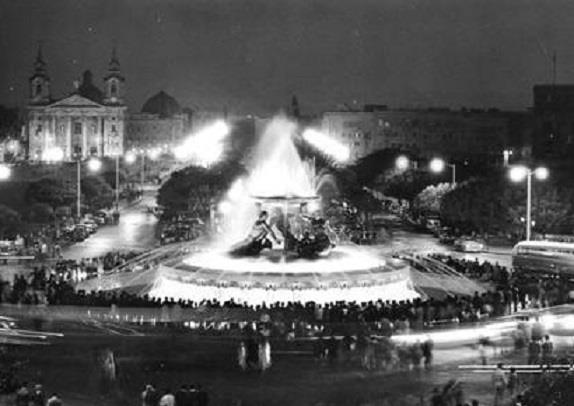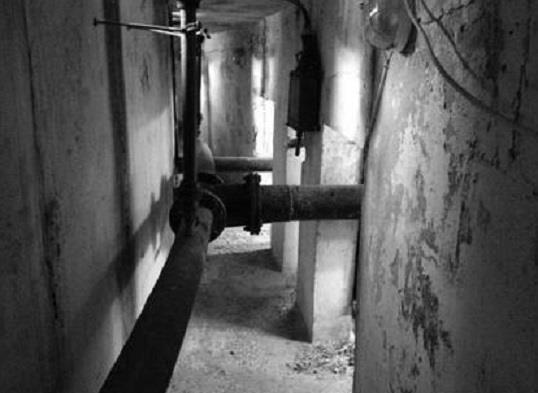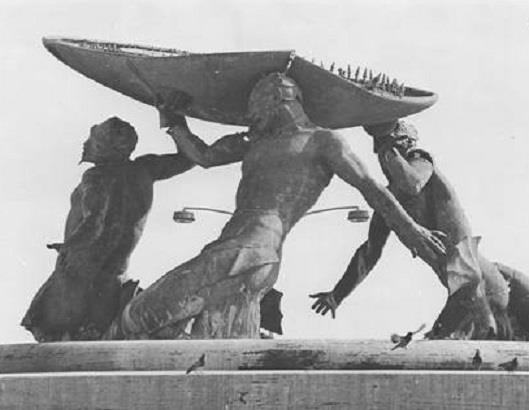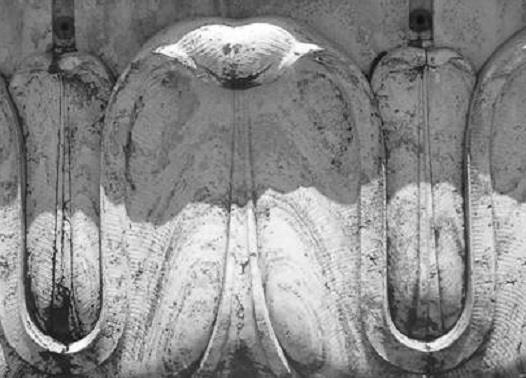The Ministry for Transport and Infrastructure has embarked on the process to restore Valletta’s Triton Fountain, which has had something of a tortuous history since its beginnings.
Although this is a magnificent monument, having initially been adorned with a ravishing water display, successive administrations have failed to uphold the importance and value of this artistic jewel.
Over the years, the Triton Fountain has been neglected and abused. It has sustained extensive damage and has never been appropriately restored. However, despite the indignities it has sustained, the Fountain has endured, patiently waiting to be restored to its original glory. That time has now come.

(Source: Victor Apap collection)
The plans to build a monumental water fountain were embarked upon in 1952 during the Coalition Government consisting of the Partit Nazzjonalista led by Giorgio Borg Olivier (1911-1980) and the Malta Worker’s Party led by Sir Paul Boffa (1890-1962). A competition was launched by the Ministry for Public Works and Reconstruction, and the proposals submitted were evaluated by various professionals in the field. The winning design was that submitted by sculptor Vincent Apap (1909-2003), with the collaboration of Victor Anastasi (1913-1993), to whom is attributed the planning of the technical and architectural layout of the proposal.
The work was carried out almost in its entirety during the period 1955-58, under the Malta Labour Party government led by Prime Minister Dominic Mintoff (1916-2012), with Guzè Ellul Mercer (1897-1961) responsible as Minister for Public Works and Reconstruction. By the time the Mintoff government resigned in August 1958, the civil work on site had been completed and the hoarding removed. However, work on the bronze group, being carried out at a foundry in Naples, was yet to be completed.
The fountain was finally completed in 1959, while Malta was ruled by a colonial government. The political unrest of the time, coupled with a lack of institutional ownership of the project, led to the highly unfortunate outcome that the Fountain was not formally unveiled. Its water started flowing on the evening of Saturday, 16 May 1959.

(Source Stefan Calamatta)
Apap adopted the mythological figure of the Triton to accentuate Malta’s maritime links. The Fontana delle Tartarughe, located in Rome’s Piazza Mattei, appears to have inspired the concept of the Triton figures as telamons bearing the bronze basin, the bacino superiore. With regard to the layout of the Fountain, early drawings that survive from Apap’s private archive show a quadripartite plan, inspired by the Fontana delle Naiadi located in Rome’s Piazza della Repubblica. However, the final designs of the Fountain were significantly altered to the tripartite concentric plan that was eventually adopted.
The base of the monument was planned in a concentric manner, constructed entirely in reinforced concrete and consisting of four water-bearing concentric basins, the bacino centrale, the vasca intermedia, the vaschietta, and the large outer vasca inferiore. All exposed plan surfaces and the outer elevation surface of the vasca intermedia were clad with a staggering 730 tons of Roman travertine slabs. The most visible elevation aspect of the basins was the outer elevation of the vasca intermedia, which was clad in a symmetrical foliage relief in travertine.
A functioning fountain such as the Triton Fountain required a series of passages and chambers beneath the structure, intended to contain the water and electrical services and to allow for maintenance and inspection. To this end, a concentric underground system, accessible from a manhole located on the pavement surrounding the Fountain, and including a pump room, was designed. The system covered an area of over 140 square metres of underground passages feeding all parts of the Fountain with water pipes, electrical wiring and fittings.

(Source Michael Cassar)
Owing to its prime location and attraction, the Fountain was used as a backdrop for events which, at times, were not in keeping with its intended hydrological and decorative role. Misuse of the top bronze basin and the process of natural deterioration resulted in the failure of the inverted bronze tank mounted inside the bronze basin to displace water and limit the weight of water supported by the arms of the Triton figures. This failure resulted in an increase in the amount of water contained in the top basin, causing excessive structural strain on the supporting statuary.
The inherent weakness in the structural design of the supporting arms of the bronze group, coupled with the excessive weight of water filling the top bronze basin, were the primary determining factors that eventually led to the failure of one of the Triton supporting arms, which in turn caused the collapse of the basin and resulted in substantial damage to two of the three Triton figures. Remedial action and renovation work was undertaken by the Malta Drydocks in the mid-1980s. The basin was repaired, but remained substantially warped. The damaged Triton figures were also repaired, and the bronze group was modified by the addition of a central supporting accretion covered by a bronze sculptural arrangement devised to support the top basin in conjunction with the Triton figures, and to incorporate the water pipe originally passing through the Triton arms and hands holding the basin.

(Source Kenneth Cauchi)
Deterioration, damage, and neglect have all taken their toll on this magnificent monument. The problems are various and substantial, ranging from extensive corrosion damage and the structural inadequacy of the bronze group, deterioration and fouling of the travertine slabs, deterioration and limitations of the civil work, and deficiencies and breakdown of the water and electrical systems. Clearly, these problems need to be addressed in a professional and sustained manner, requiring application and determination.
The Ministry for Transport and Infrastructure, through the Department of Contracts, has recently published the Pre-Qualification Questionnaire document as part of the Tender for the restoration, operation and maintenance of the Triton Fountain. The overall objective of this project is to restore the Fountain to its original appearance and function, using modern technology and standards to enhance the authentic architectural value of the Triton Fountain as a visible and dynamic national monument.